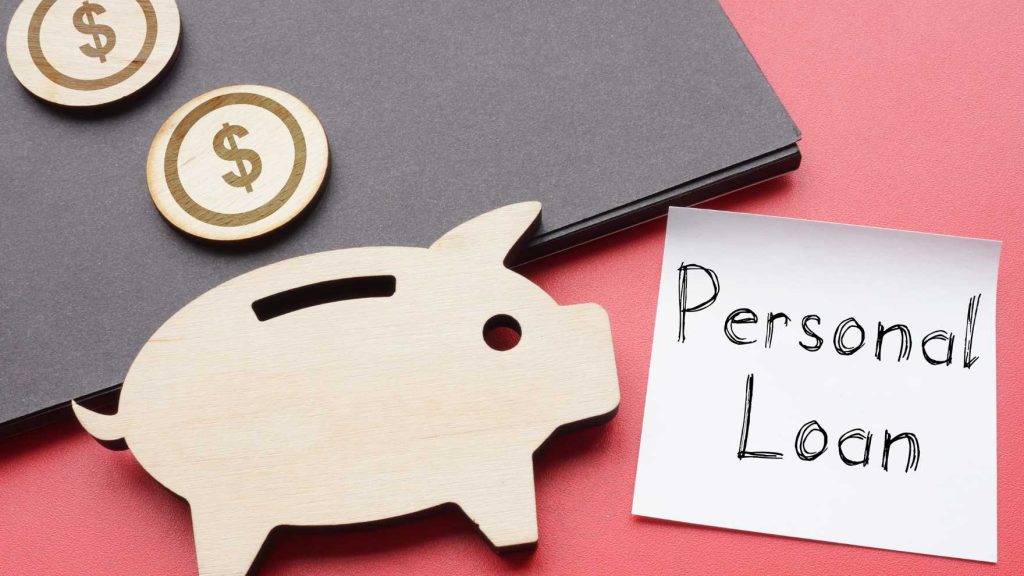Checklist Before Applying for a Personal Loan – Comprehensive Guide 2025
Personal Loan : Applying for a personal loan is one of the most common financial decisions individuals make, especially in today’s fast-paced world where instant credit solutions have become a necessity. Whether it’s for covering emergency expenses, funding a wedding, managing education costs, home renovation, consolidating debts, or simply improving cash flow, personal loans provide quick and flexible access to money. However, many applicants make mistakes that lead to loan rejection, higher interest rates, or repayment struggles. To avoid such pitfalls, you must follow a structured checklist before applying for a personal loan. This ensures you not only increase your chances of approval but also get the best deal with minimum stress.
Table of Contents
In this comprehensive guide, we’ll explore everything you need to know before applying for a personal loan in 2025, including eligibility requirements, credit score considerations, loan comparison strategies, and important documents to keep ready.
Understanding the Basics of a Personal Loan

Before diving into the checklist, it’s essential to understand what a personal loan actually means. A personal loan is an unsecured loan, which means you don’t need to provide collateral like property or gold. Banks, NBFCs, and fintech apps disburse the loan based on your income, credit score, and repayment ability. Loan amounts usually range between ₹50,000 to ₹25,00,000 (sometimes more depending on the lender), with tenures between 12 months to 60 months. Since they are unsecured, personal loans typically carry higher interest rates compared to secured loans. However, because they offer quick disbursement and flexibility of use, they remain one of the most preferred financial products in India and worldwide.
Understanding the Importance of a Personal Loan Checklist

Before we dive into the step-by-step checklist, it’s crucial to understand why this process matters. A personal loan is an unsecured loan, meaning you don’t need to pledge collateral such as property, gold, or other assets. Because of this, lenders rely heavily on your creditworthiness, repayment capacity, and financial history to make lending decisions. A well-prepared applicant not only gets approved faster but also secures a better interest rate, lower processing fee, and more favorable terms. Think of the checklist as a roadmap to avoid mistakes like applying with multiple lenders, hiding existing debt, or skipping proper research.
Also Read : Tips for Securing the Best Personal Loan Rates : Comprehensive Guide 2025
Step 1: Check Your Credit Score
Your credit score is one of the most critical factors lenders consider before approving a personal loan. In India, credit scores are typically provided by agencies such as CIBIL, Experian, Equifax, and CRIF High Mark. A score above 750 is generally considered excellent and can help you secure loans at attractive interest rates.
- Why it matters: A good credit score demonstrates your repayment discipline. Lenders view you as a low-risk borrower, which improves your approval chances.
- Action item: Obtain your latest credit report from one of the credit bureaus. Review it for errors such as incorrect loan accounts or wrongly reported defaults, and raise disputes if necessary.
- Pro tip: If your score is below 700, work on improving it by paying outstanding bills, reducing credit card utilization, and avoiding multiple hard inquiries before applying.
Step 2: Assess Your Loan Eligibility
Every lender has specific eligibility requirements for personal loans. These usually include:
- Age limit: Most banks require applicants to be between 21 and 60 years.
- Income level: Salaried individuals may need a minimum monthly income of ₹15,000–₹25,000, while self-employed applicants must show stable income sources.
- Employment stability: Lenders prefer salaried applicants with at least 1–2 years of work experience, preferably in the current organization for 6–12 months.
- Debt-to-income ratio (DTI): Ideally, your EMIs (including the new loan) should not exceed 40–50% of your monthly income.
- Action item: Use an online personal loan eligibility calculator to estimate how much you can borrow.
Step 3: Compare Interest Rates and Fees
Not all personal loans are created equal. Lenders offer different interest rates based on your credit score, income, and profile. A small difference in rates can make a significant impact over time.
- Interest rates: In India, personal loan interest rates generally range between 10% and 24% per annum.
- Processing fee: This can be 1% to 3% of the loan amount. Some lenders waive processing fees during promotional periods.
- Prepayment charges: If you want to close your loan early, lenders may impose penalties ranging from 2% to 5% of the outstanding amount.
- Other charges: Check for hidden fees such as GST, EMI bounce charges, or late payment penalties.
- Action item: Create a comparison chart of at least 3–5 lenders before making a final decision.
Step 4: Decide the Loan Amount and Tenure
Many applicants make the mistake of borrowing more than they need or choosing an inappropriate tenure. This can increase EMI pressure or lead to unnecessary interest costs.
- Loan amount: Always borrow based on your actual requirement and repayment capacity.
- Loan tenure: A shorter tenure means higher EMIs but lower overall interest, while a longer tenure reduces EMIs but increases total interest cost.
- Action item: Use an EMI calculator to find the right balance between EMI affordability and total interest outgo.
Step 5: Organize the Required Documents
Personal loan applications usually require the following documents:
- Proof of identity: Aadhaar card, PAN card, passport, or voter ID.
- Proof of address: Utility bills, rental agreement, or passport.
- Income proof: Salary slips, bank statements, or IT returns for the last 2–3 years (for self-employed).
- Employment proof: Employment letter, company ID, or business registration certificate (for self-employed).
- Action item: Keep both physical and scanned copies ready to ensure faster approval.
Step 6: Evaluate the Impact on Your Finances
Taking a personal loan adds to your financial commitments, so it’s vital to assess its impact:
- Debt burden: Ensure your monthly EMIs don’t strain your budget.
- Emergency fund: Maintain savings for emergencies even after taking a loan.
- Future credit needs: If you plan to apply for a home loan or car loan in the near future, taking a large personal loan might reduce your eligibility.
- Action item: Create a monthly budget and include the EMI to see if it fits comfortably.
Step 7: Choose the Right Lender
Different types of lenders offer personal loans:
- Banks: Usually have stricter eligibility but offer lower rates for salaried professionals.
- NBFCs (Non-Banking Financial Companies): More flexible eligibility but may charge slightly higher interest.
- Fintech apps: Provide instant approvals but often have shorter tenures and higher processing fees.
- Action item: Choose a lender that balances affordability with quick processing.
Step 8: Avoid Multiple Loan Applications
Many applicants apply to multiple lenders simultaneously, assuming it will increase their chances. However, each application results in a hard inquiry on your credit report, which can lower your credit score.
- Action item: Instead of applying everywhere, pre-check your eligibility on lender websites or use marketplaces that allow soft checks without impacting your score.
Buy Now : Accounting & Billing Website
Step 9: Read the Fine Print Carefully
Before signing the loan agreement, always read the terms and conditions carefully. Pay close attention to:
- Hidden charges
- Prepayment and foreclosure rules
- Penalties for late payment
- Insurance clauses
- Action item: Clarify doubts with the lender before signing.
Step 10: Create a Repayment Strategy
Taking a loan is easy, but repaying it responsibly is what secures your financial future.
- Set up auto-debit: Link your bank account for automated EMI deductions to avoid missed payments.
- Prepay when possible: Use bonuses, salary hikes, or windfall gains to prepay and reduce your burden.
- Track your credit score: Ensure timely repayment reflects positively on your credit history.
Conclusion

A personal loan can be a powerful financial tool when used wisely, but it can also become a burden if applied for without preparation. By following this comprehensive checklist before applying for a personal loan, you can ensure a smooth approval process, secure better interest rates, and maintain financial stability. Remember, the key is not just to get a loan but to manage it responsibly. Whether you are applying through a bank, NBFC, or a digital lender, this guide will help you make informed decisions in 2025 and beyond.
Buy Now : Beginner to Advanced Option Trading Strategy
Disclaimer
This article is for educational purposes only and should not be considered as financial advice. Loan eligibility, interest rates, and charges vary based on the lender’s terms, applicant’s profile, and market conditions. Readers are advised to consult with financial experts or directly with lenders before making loan decisions.



